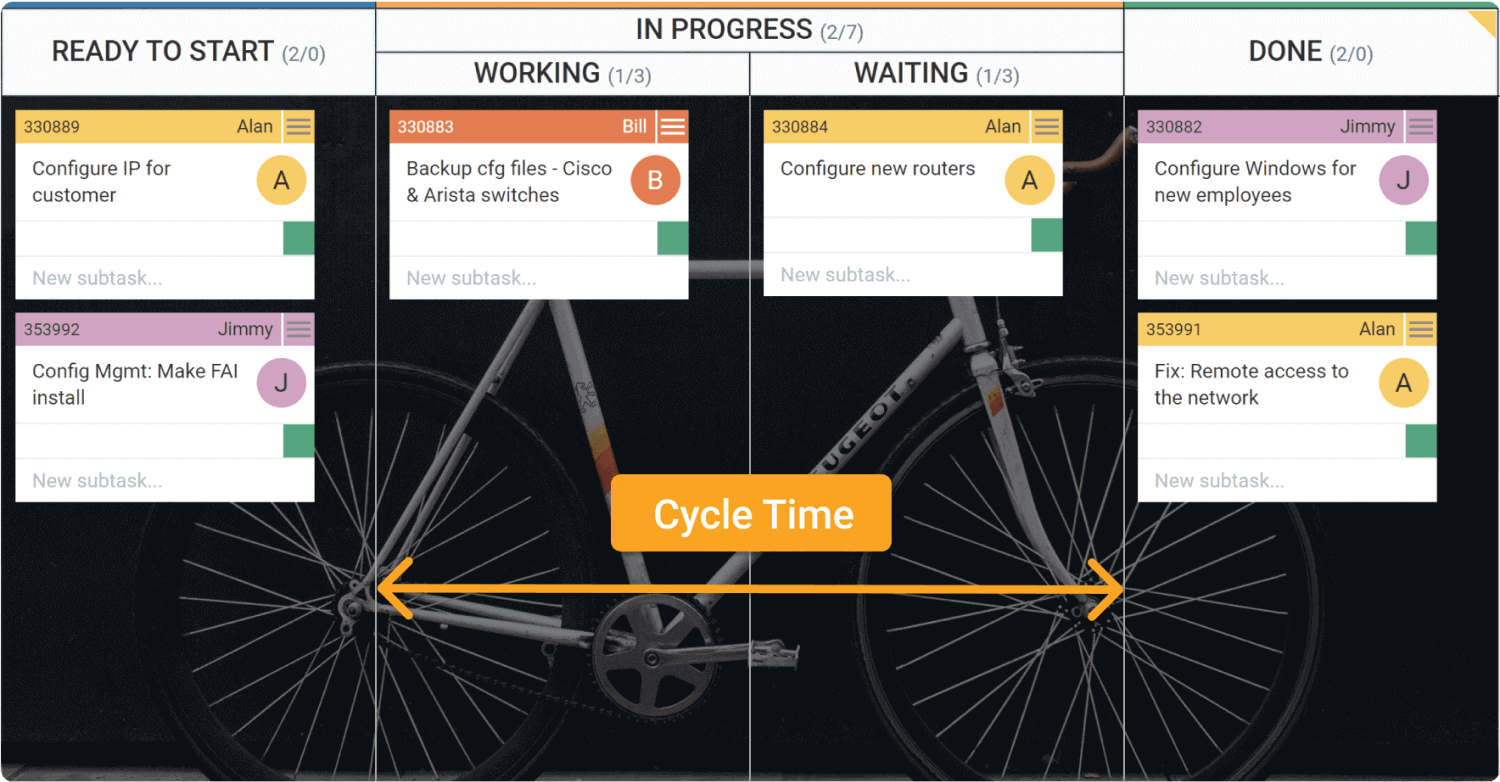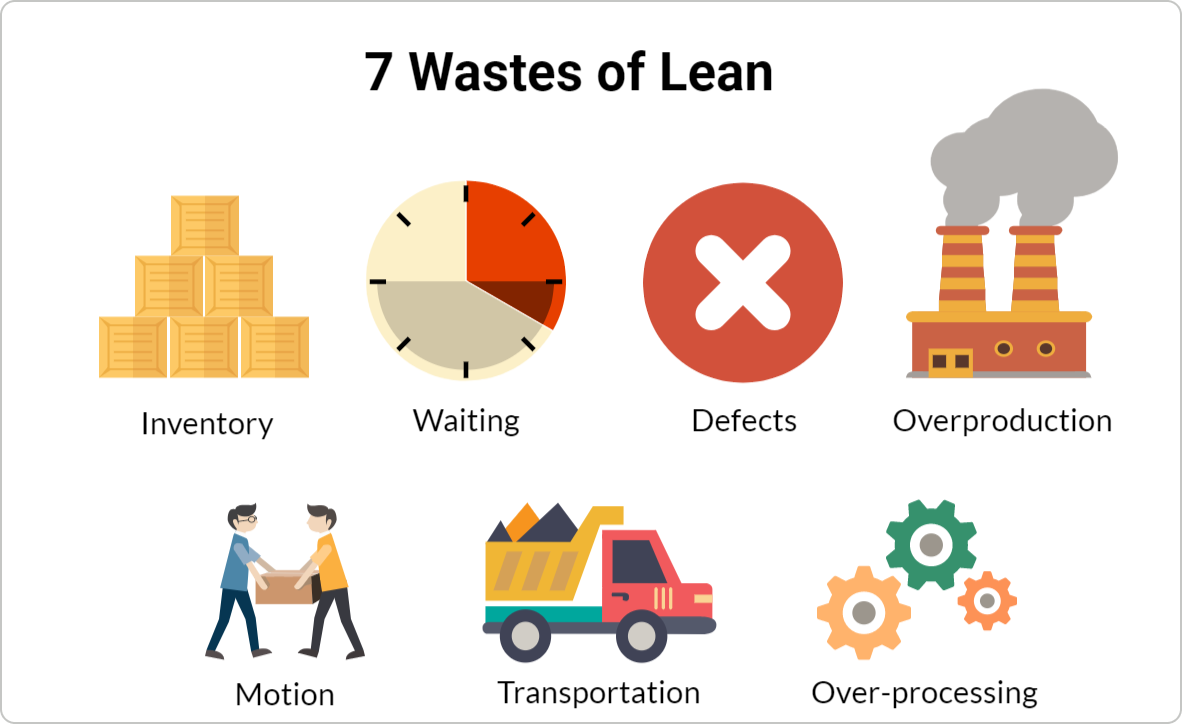Are you always on the lookout for new ways to manage projects effectively and strengthen your business processes? If you are among those brave leaders who are always chasing process improvement, we’re here to help!
Find out what Lean process improvement is, the benefits it brings across industries, and how to achieve it in your business domain – be it engineering, IT, knowledge work, etc.
What Is Lean Process Improvement?
Lean process improvement helps to eliminate waste from your processes and focuses on the activities that create value for your customers.
The approach is based on the idea of continuous improvement and employs various process improvement tools and techniques to achieve and sustain progress.
"All we are doing is looking at the time line, from the moment the customer gives us an order to the point when we collect the cash. And we are reducing that time line by removing the non-value-added wastes."
Taiichi Ohno, Toyota Production System: Beyond Large-Scale Production
How Lean Drive Process Improvement?
At Businessmap, we are firm believers in seeking constant improvement. It's part of our DNA to "always look for a better way". As the great Henry Ford said a long time ago, "if you always do what you've always done, you'll always get what you've always got".
Through continuously striving to improve your processes, products, or services, Lean allows you to set your organization on the path to:
- Discovering optimization potential and boosting process efficiency
- Enhancing the collaboration between different organizational parts
- Delivering projects faster and more successfully
Without constant process improvement, you will have trouble staying ahead of or even keeping up with your competitors.
Let's see how Lean can support you on your journey.
How to Improve a Lean Process in 4 Steps?
We picked the following steps to illustrate several ways you can start improving your processes.
Step 1. Visualize Your Workflow
Improving your process is an ongoing process that begins with visualizing your workflows. Whether you follow a more iterative or flow-based management approach, it is equally important to have a clear understanding of all process steps. To achieve full transparency in their workflows, many project managers tend to use a work management board to display work process stages in a sequential way.
Along with visualizing workflows, projects, and smaller work items on a dedicated board, you can also put into action the Lean practice of value stream mapping. It helps you break down your workflows into different stages to visualize how work flows from concept to fruition.
Getting started does not seem so complicated. As soon as your board and workflows are set up, you can apply various Agile practices to maximize process efficiency and drive continuous improvement.
Once you have mapped your process on a Kanban board, you can begin to analyze the value-adding and non-value-adding activities in your workflow. The idea is to use those insights to eliminate waste and identify where to improve in the future. Furthermore, you can use those insights to eliminate waste and identify where to improve in the future.
Step 2. Monitor Your Workflow Cycle Time
By configuring and monitoring the cycle time of your workflow (the time a work item was actively worked upon), you will be able to measure how long it takes for work to get finished and then analyze the slow-moving stages in your process. This allows you to uncover process bottlenecks or constraints and focus your improvement efforts on reducing the delivery time and boosting your productivity.

Visualizing the cycle time of a work process on a Kanban board
Step 3. Stop the workflow to find the root cause of the problem
Key to achieving a significant process improvement is developing a system that automatically responds when a problem occurs. It allows anyone in your organization to stop the workflow or signal when they notice an abnormality. This raises an immediate awareness of the problem, and improving it becomes everyone's goal.
To achieve this, Lean proposes Jidoka - one of the pillars of the Toyota production system (TPS). It is also known as autonomation or automation with a human touch. Originally developed for manufacturing, the method helps to ensure that you deliver defect-free products to your customers by relying on 4 simple principles:
- Discover an abnormality;
- Stop the process;
- Solve the immediate problem;
- Investigate and solve the root cause of the problem.
Today, some dedicated software solutions allow you to automate the use of visual signals indicating work item's anomalies. In knowledge work management, for instance, that signal usually leads to the practice of "swarming". The process of swarming aims to look into the bottleneck in the workflow, find its root cause, and help resolve it before starting new work.
Step 4. Eliminate waste from your processes and work on a small scale
The other pillar of TPS and Lean management - the Just-In-Time Production method, calls for production only when there is a demand. The concept aims at removing overproduction and, by doing so, to create a streamlined and efficient workflow.
Using Kanban is an integral part of the successful application of the just-in-time production method. Through visualization, the approach ensures that all team members are aware of what needs to be done at every moment.
Another lean process improvement method that can help you satisfy customer demand in the most efficient way is Heijunka. It aims to optimize your processes, breaking down big batches of work into smaller portions and organizing team capacity according to demand.
You can do this by leveling the order in which you process work according to the average number of customer requests you register.

Popular Lean Methods for Process Optimization
Lean offers a variety of proven methods to aid you in your process improvement journey. You can apply the following individually or in combination.
Hoshin Kanri
Hoshin Kanri is a lean process improvement method for strategic planning. It is essential for communicating strategy across an entire organization. The method consists of 7 steps:
- Establish organizational vision;
- Develop breakthrough objectives;
- Develop annual objectives;
- Deploy annual objectives;
- Implement annual objectives;
- Perform a monthly review;
- Perform an annual review.
5S Method
The 5S is a method for creating and maintaining order in your workplace. You can easily add it to any process improvement plan because of its simplicity. 5S stands for:
- Sort;
- Set order;
- Shine;
- Standardize;
- Sustain.
Together these 5 practices allow you to keep your workplace a temple of productivity and reduce process wastes such as unnecessary motion and waiting. 5S is an adored method in the manufacturing world, but it has its application in knowledge-work as well.
5 Whys
The 5 Whys technique is one of the most effective continuous improvement tools for root cause analysis in the Lean management arsenal. The tool can help you achieve process improvement by simply asking the question "why" as many times as needed until you reach the core of a problem or idea. We are serious fans of the 5 Whys and use them in practically everything we do.
Gemba Walk
The Gemba Walk method basically takes a lean manager outside of their office and puts them where the real work happens. The method consists of 3 core elements:
- Going around the workplace and seeing how the team works (without doing a formal inspection);
- Communicating with the team and asking for any problems that they might have spotted;
- Respecting people's opinions and expertise.
The purpose of going on a Gemba is to observe the actual work process, engage with employees, and explore opportunities for process improvement.
Develop a Continuous Improvement Mindset with a Lean Process
Achieving continuous process improvement is vital for staying ahead or even keeping up with your competitors. As a methodology, Lean offers a variety of tools that can help you with that. They cover everything from strategic planning to daily workflow optimization on a team level.
We encourage you to take your time and research every lean process improvement method listed in this article. Together, or separately, they can help you achieve organizational harmony and deliver more value to your customers faster than ever before.
Try Businessmap Free for 14 days
Michaela Toneva
Kanban & Agile Practitioner | SEO & Content Creator
With a never-ending thirst for knowledge and a passion for continuous improvement, Michaela is an Agile practitioner with a good understanding of Kanban, Lean, and Agile methodologies. Her professional background includes SEO and content writing with a dose of sales and a pinch of social media.



